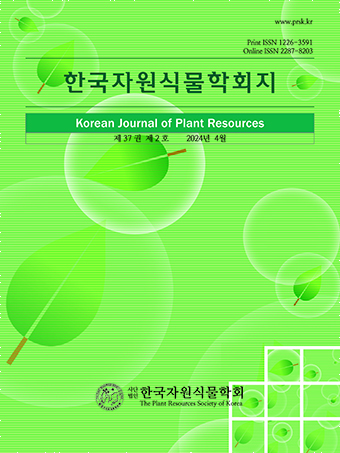Research Article
Abstract
References
Information
- Publisher :The Plant Resources Society of Korea
- Publisher(Ko) :한국자원식물학회
- Journal Title :Korean Journal of Plant Resources
- Journal Title(Ko) :한국자원식물학회지
- Volume : 33
- No :3
- Pages :194-199
- Received Date : 2020-04-06
- Revised Date : 2020-05-08
- Accepted Date : 2020-05-12
- DOI :https://doi.org/10.7732/kjpr.2020.33.3.194




 Korean Journal of Plant Resources
Korean Journal of Plant Resources







